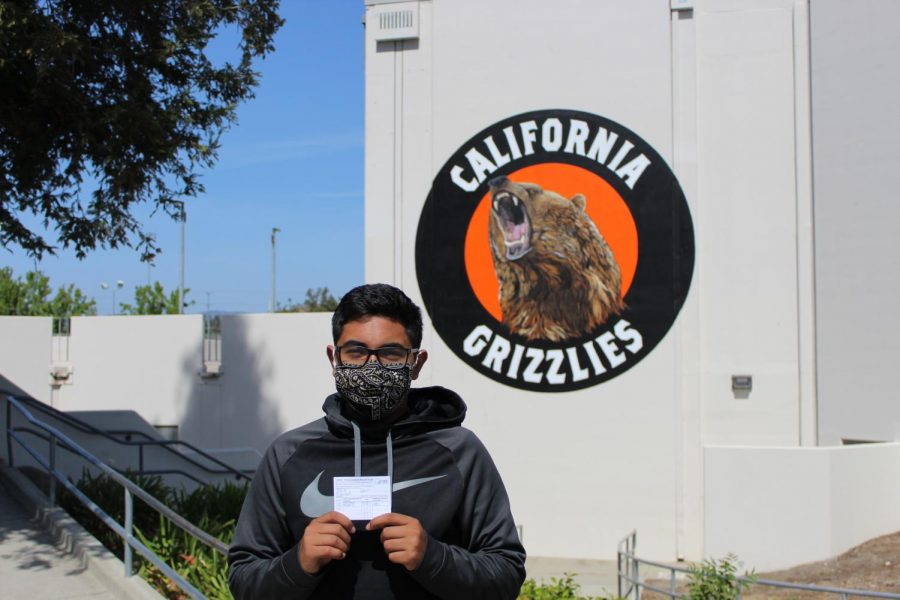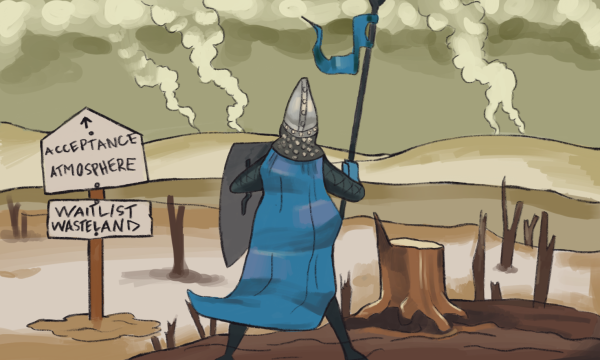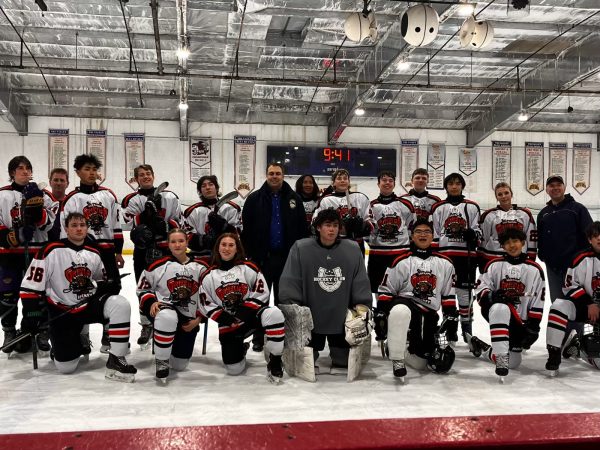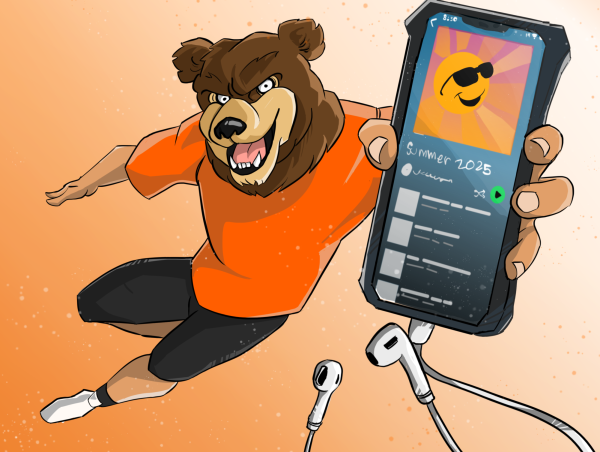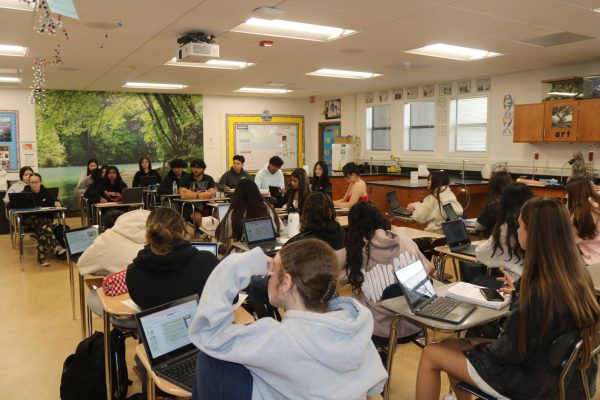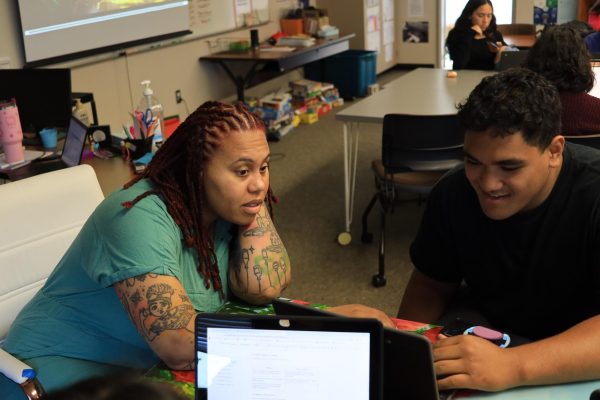Cal High students get vaccinated
As the county expands vaccine eligibility, students jump at the chance to receive their shots
Cal High junior Jonah Aziz stands in front of Cal High holding his COVID-19 vaccination card.
The days of students sitting through online lectures holed up in their bedrooms are coming to an end.
There is a light at the end of the tunnel and a return to normalcy as more and more Cal High students get vaccinated for COVID-19.
As of April 29, 99.7 million Americans have been fully vaccinated against COVID-19, making up about 26 percent of the American population. Furthermore, 33 percent of the Contra Costa County population has been fully vaccinated. More Cal students have been joining that number since March 31, when Contra Costa County opened up vaccines to all Californians ages 16 and up.
Since the vaccine rollout started in mid-December, the prioritization of vaccination has moved from health care workers to the elderly to those with underlying conditions to essential workers before finally ending with everyone 16 and older.
Some students, however, were able to get their vaccine earlier because of their status as an essential worker, working in areas such as healthcare and food services.
“I was eligible through my work because I work at a grocery store and decided to just get it out of the way now instead of later,” senior Bennett Aguire said.
Junior Leah Keswani, on the other hand, was eligible because of her position as a volunteer at Kaiser Permanente.
“It was a very positive experience,” said Keswani, who drove all the way to south Sacramento for her first shot. “I am very glad how organized it was.”
Students went to many different locations to receive their vaccines.
Senior Saariya Malik received her vaccination at the Muslim Community Center in Pleasanton.
Retail pharmacies such as CVS, Rite Aid and Walgreens have also begun distributing vaccines across the country through a federal program. Junior Jack Frank was one of the few to receive his vaccine at one of these sites. He drove to Walgreens in Walnut Creek to get his first shot.
“The whole process took about 20 minutes once I got inside, but the people administering the vaccine were on a lunch break when I got there so probably 45 minutes in total,” Frank said.
Keswani, on the other hand, had a different experience. While the process of getting the vaccine was instantaneous with a 15 minute observation period, she had to drive for almost an hour and a half to get to the site at Kaiser South Sacramento.
Of the students interviewed, the Pfizer vaccine was the one most students said they received. Considering it is the only vaccine currently approved for those who are 16 and 17 years old, this is no surprise. It was also favored because of its higher efficacy rate.
“I had no doubts of its efficacy whatsoever, especially since we can only get Pfizer which has around a 95 percent efficacy rate,” Frank said.
The Pfizer vaccine has the highest efficacy rate among the three COVID vaccines approved in the US, followed by Moderna at 94 percent and Johnson and Johnson at 66 percent.
The lower efficacy rate of the Johnson and Johnson vaccine, which requires only one shot compared to two for the other vaccines, has been a cause for concern for some people. There have also been concerns about recent news of severe blood clotting in six individuals receiving the Johnson & Johnson vaccine.
The FDA and CDC even suggested the halting of distribution for this vaccine, and California state officials officially put a pause on it on April 13.
But Malik received the Johnson and Johnson vaccine along with more than 6.8 million other Americans. Despite the controversy surrounding it, Malik is still confident it will be effective.
“I know J&J isn’t the strongest of the vaccines but in my opinion, as long as vaccines are out it’s alright, I just need to be careful,” Malik said. “A vaccine is a vaccine and I’m not too finicky about which one I would get.”
While all the students interviewed had a different vaccine experience, whether it be the type of vaccine received or the location of its administration, each student came out of it with a positive outlook.
“I was super excited to get it and it made me feel a lot safer,” junior Maison Erridge said. “I feel so lucky to have gotten the vaccine.”
Although hesitant of the vaccine itself, Aguire expressed similar sentiments.
“I wanna say I’m confident in the vaccine’s effectiveness because there is a lot of research and science behind it, but it is a little scary just because it’s a newer and not as researched vaccine compared to other ones,” Aguire said. “I’m grateful I got to get it, though, and as early as I did.”
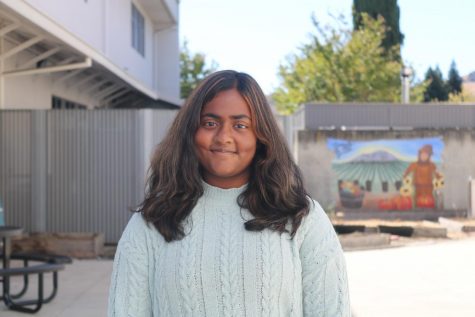
Shiphrah Moses is a senior and is the Managing Editor of The Californian. This is her second year as a part of the class and is excited to finally be doing...
